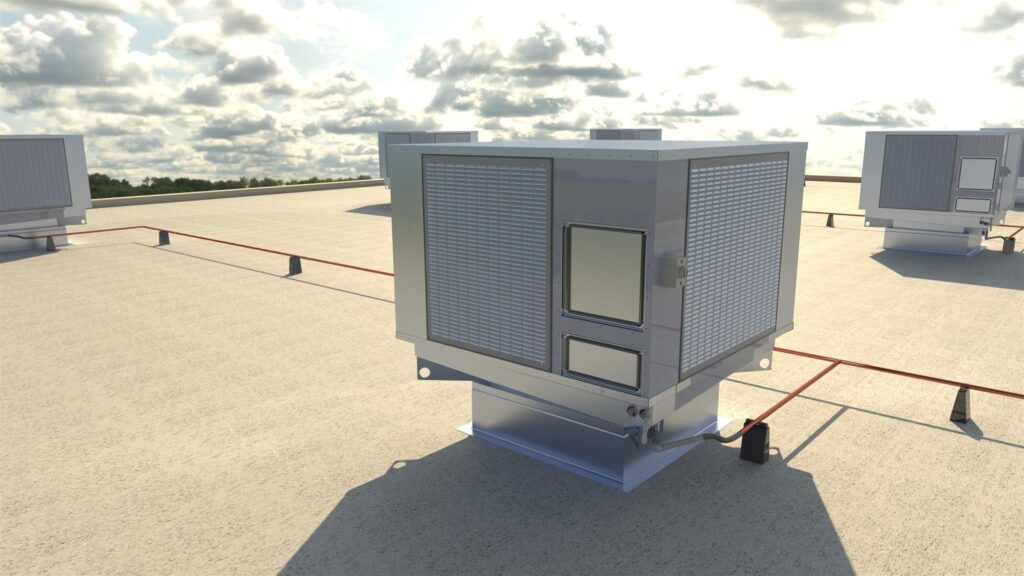21st Century Ventilation – The History of Natural Cooling
Since the first caveman figured out that “hot air rises and cool air sinks”, humans have managed to create more comfortable living conditions using natural ventilation. Everything changed in the early 20th century with the invention of air conditioning. Now, in the early part of the 21st century, we find ourselves looking back at early methods to figure out how to cool without consuming energy.

The Moffitt Caveman in Action
As far back as man has walked the earth, he has controlled his environment with indoor cooling and heat. Originally, a simple cave opening to provided natural cooling and heating. In time, windows followed, then vents, gables, and more. Learning how to take advantage of the direction and flow of the wind was an early discovery. This proved to be critical to living comfortably. This provided greater temperature control throughout the year.
Over the next few centuries buildings used natural cooling. They took advantage of cross-breezes and to minimize solar impact. Wind catchers and towers would direct warm air away from living quarters . Fans provided an evaporative cooling effect, and ice and water for adiabatic cooling.
At the beginning of the 20th century, however, everything changed.
The 20th Century and the Birth of Air Conditioning
The invention and adoption of air conditioning changed everything. Regardless of open areas or how the building is made the buildings could stay cool. Architects and Engineers made these large building and skyscrapers to stay cool using this new technology. However, it also lead to many different floor plans and building designs that all but ignored the needs of airflow and movement. In turn, this allowed more and more people to move to hotter climates such as the southern United States, as they now had a method to be able to cope with the heat inside.
For a long time, people considered air conditioning the perfect solution. Of course, that was when energy was cheap and plentiful and the environmental costs weren’t yet a consideration.
21st Century Ventilation and a Return To Natural Ventilation
Today we are more conscious of our environmental impact. We consider energy consumption, air conditioning by-products, and inefficiency. Rather than sticking with the flawed approach of total thermal control architects and engineers now consider systems that self-regulate and cool naturally. They look at cooling as part of the building, not an afterthought.
Planning how air moves throughout the building, from room to room and floor to floor, has become a serious consideration. Whole building cooling, not just room by room, is now the main focus. Engineers and architects to revisit the more old-fashioned approaches to building cooling. They have rediscovered how wind-effect ventilation can provide a cool breeze, and how to fix the machines when they break. They’ve also realized that stack-effect ventilation can exhaust the warm air through the ceiling.
Using the whole building focus, designers have figured out how to integrate these solutions into buildings of all shapes and sizes. Furthermore, they recognize the limitations of this type of cooling and have figured out how to use it in conjunction with mechanical methods. For instance, the new 563′ tall PNC tower uses natural ventilation half the time and powered cooling the other half. Innovative solutions like these cut energy use in half and make the building more efficient throughout the year. Its innovative solutions like these that are the future of modern 21st century ventilation.
